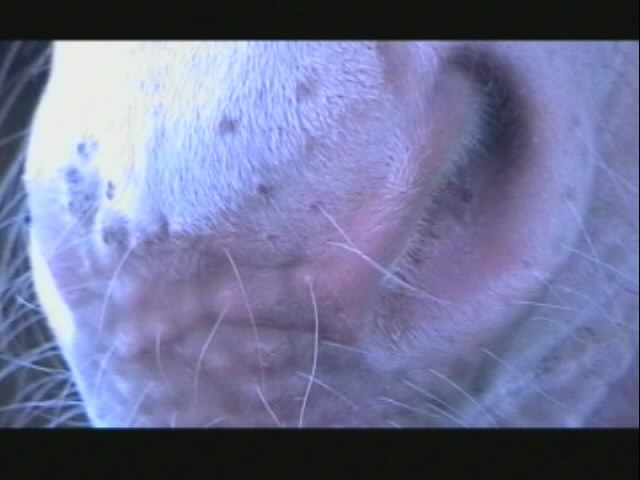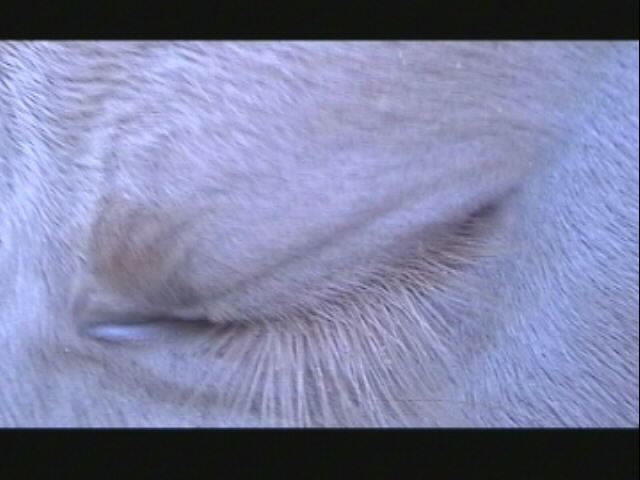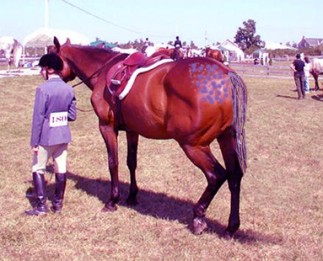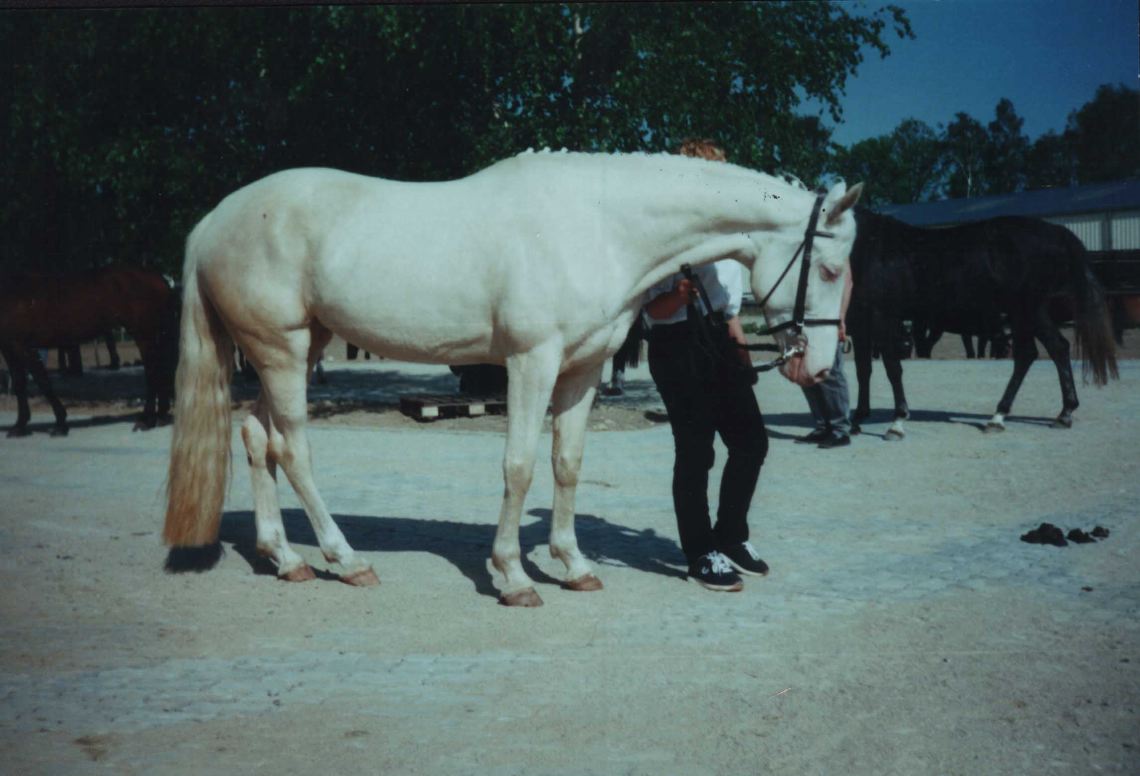First of all, why am I listed as “working hunter”?
I actually don’t own Rou. I sold him as a 5 month old colt. He was born a very light and silvery color of palomino with very light hazel eyes. He had an odd silver tone to his coat that increased until I shipped him to Oregon at 7 months old. He did NOT have the typical white hairs around his eyes that are typical of greying horses when they are young. His mane and tail remained predominantly white until 2 or 3 years old.
After it became evident that his color was appearing more grey over time, I just assumed that the white hairs were not as evident due to his light body color.
Anriejetto was a very typical grey, lightening with each year, but I don’t know his base color.
Gold Apollo was very typical palomino at a younger age, but as he matured he developed darker chocolate toned dapples and a silverish mane. However, I don’t believe TBs carry silver dapple and I don’t think coloring could have been taken for silver dapple either.
Rou’s dam is very typical deep palomino, almost orange in the winter. Her dam was a liver chestnut, who I owned as well.
I have suggested genetic testing, but it falls on deaf ears. He has since been sold to a dressage rider who may geld him anyway. It seemed strange to me that if Rou is such an unusual color that his color warmblood breeder owner would not have wanted to keep him. He was a fantastic mover and nearly 17 hands and supposedly a rare color.
Rou did produce a few cremes and palominos but maybe they are too young yet to tell. Rou didn’t grey much until age 2 or 3.
Weird!
Chris
Ladybug Hill–Hunters and Ponies
Specializing in Palomino TBs
ladybughillfarm.vaix.net
![]()
![]()






